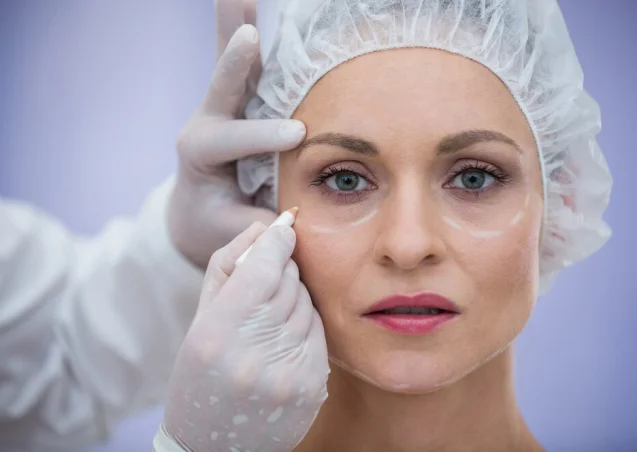Why is
Blepharoplasty Performed?
1. To Improve Vision
This procedure is ideal for individuals dealing with excess skin or bulging fat in the upper eyelids. The surgery involves removing excess skin and fat, and in some cases, the removal of a thin strip of muscle (the orbicularis oculi). By eliminating the extra bulk, the weight that drags the eyelids down is reduced, giving the eyes a more open and refreshed look.
In addition to improving appearance, upper eyelid surgery can enhance the field of vision by reducing the strain caused by sagging skin, which may make it harder to keep the eyes open.
2. Lower Eyelid Lift (Lower Blepharoplasty)
Lower eyelid surgery is mainly performed to address cosmetic concerns such as puffiness, bags, and loose skin under the eyes. It is not typically covered by insurance, as it is done for aesthetic reasons.
During the procedure, excess fat, skin, and muscle that contribute to dark circles, wrinkles, and puffiness are removed. A small incision is made either just below the lash line or inside the lower eyelid. Through this incision, the surgeon removes the excess tissue, resulting in a smoother, more youthful under-eye appearance.
How is Blepharoplasty Performed?
Blepharoplasty involves the removal of excess skin and fat, as well as tightening lax muscles around the eyelids. The procedure can be performed on both the upper and lower eyelids in a single session. Typically done under local anesthesia, general anesthesia may be used if the patient prefers or if another procedure is being combined.
For upper eyelid surgery, markings are made above the eye to determine how much skin needs to be removed. Incisions are then made along these markings using a blade or radiofrequency cautery, ensuring that scars are hidden in the natural folds of the eyelid. Fat may also be excised or repositioned as necessary, and the incision is closed with sutures.
For lower eyelid surgery, the procedure can be done via the conjunctiva (inner eyelid) or through the skin. In the conjunctival approach, excess fat is removed from the lower eyelid bags, and skin rejuvenation techniques like laser resurfacing or chemical peels may be used.
When performed through the skin, an incision is made just below the lower eyelashes. Extra fat is removed, and the remaining fat is repositioned for better contouring. Excess skin is also removed. In some cases, the orbicularis oculi muscle and orbital septum may be tightened during the procedure to enhance results.
What is the Ideal Age for Blepharoplasty?
Blepharoplasty is typically recommended for individuals over the age of 40, as this is when the skin around the eyes begins to lose elasticity and may start to droop. However, younger patients may also consider the procedure if they experience early signs of aging, such as eye bags. Additionally, those dissatisfied with the natural shape or creases of their eyelids may choose to undergo this surgery regardless of age.
